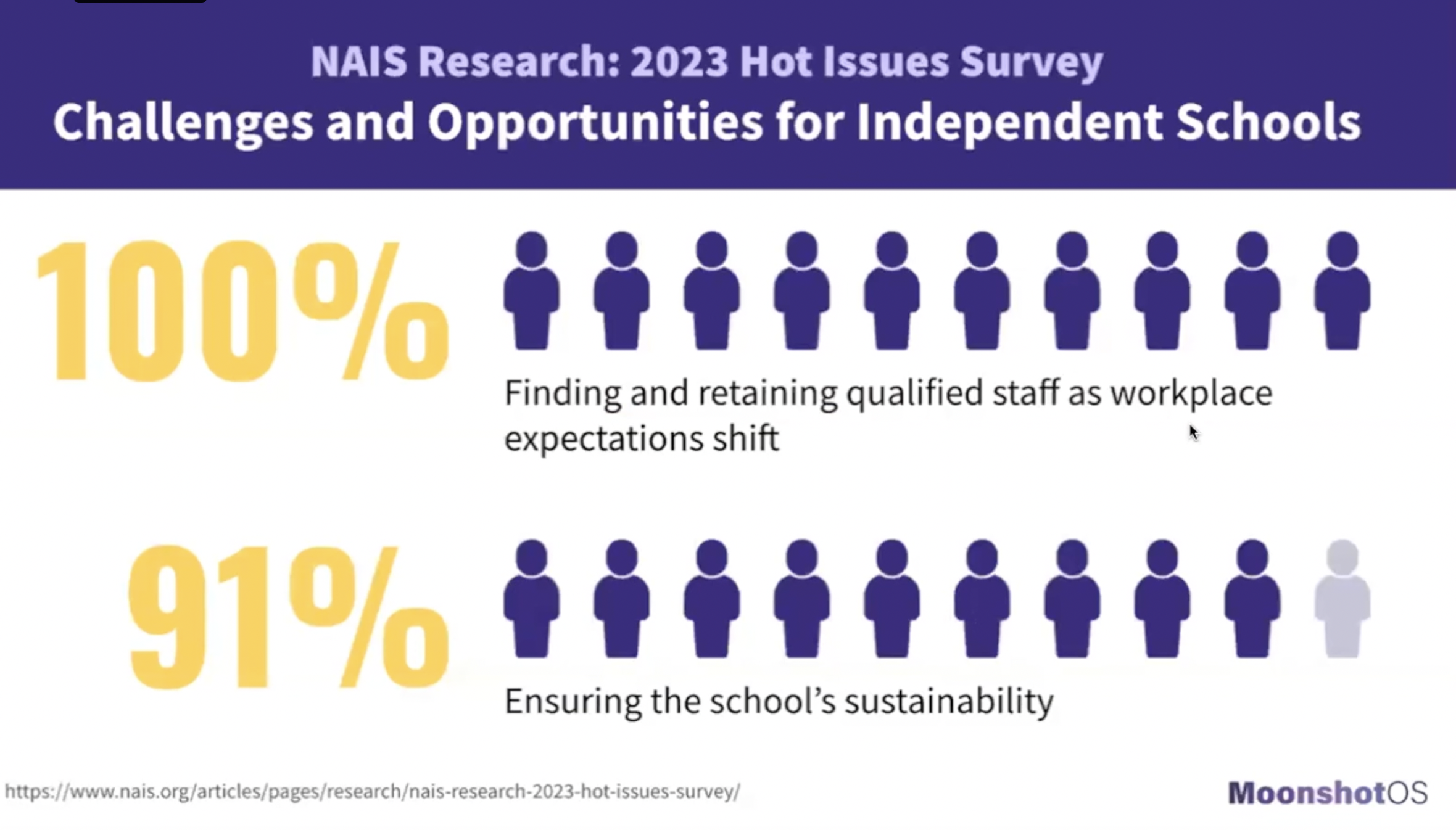The Two Main Challenges that Keep Heads of School Up at Night
In his SPARC Webinar "100 Heads of School Critique the Independent School Business Model,” Peter Baron, Founder of MoonshotOS and “passionate champion for independent schools,” discussed the changing landscape in which independent schools operate. The traditional business model isn’t working, he says, and this model—and school leadership—must adapt and change so schools can grow and thrive.
Baron referred to the NAIS Hot Issues Survey in which Heads of School identified their main concerns. Baron cited two key issues that keep them up at night:

Hiring and Retaining Qualified Staff
- Independent schools are creating new programs to meet the growing needs of their students, such as investing in social/emotional learning. Because these programs often don’t generate enough revenue to cover the cost of hiring more staff, teachers are being asked to fill these roles on top of their regular classroom work. This leads to teachers leaving because of overwork and burnout.
- The demands of potential hires, particularly Gen Z, have changed dramatically. In the aftermath of COVID and a changing technological culture, young workers want flexible jobs, often remote, and they want to work with organizations that reflect their personal values.
Ensuring the School’s Sustainability
- Demographic patterns in the United States are shifting as families move out of their home states. Many independent schools in New England, for example, have seen a decline in applications, while schools in Florida have more than ever.
- Declining birth rates have also led to a decline in potential school applicants. And, like the new generation of potential staff hires, parents’ expectations have changed. They are looking for schools that match their own values—the values they want to pass on to their children—and are less likely to choose a school based on its prestige or reputation alone.
In his experience, Baron has found Heads of School to be deeply committed, talented, and caring about their schools and communities. What came to light in his research is that few of them have training in business and/or entrepreneurship. To design and implement new business models to serve the changing needs of independent schools, school leadership must be equipped with the skills to encourage creative problem-solving, risk-taking, and innovation.
Fortunately, there are success stories of Heads who have led their schools to sustainability and growth. One example Baron shared was Booth Kyle, hired as the Head of Indian Creek School in Crownsville, Maryland in 2019. Inheriting a $750,000 deficit, he turned things around through strategies that generated or saved money while aligning with the school’s mission. These included consolidating two campuses into one, implementing cost-saving measures in transportation, dining, and staffing, and renting out athletic facilities. These changes, based on a new business model that valued innovative thinking and a higher tolerance for risk, resulted in operational surpluses after one year.

As auxiliary professionals, growing your programs and generating non-tuition revenue can be a part of your school’s changing business model. SPARC offers a wealth of tools and resources, free for all members, to build your entrepreneurial skill set, be more proactive, and create data-driven strategies. Check out the SPARC Strategic Priorities Forced Ranking Worksheet, the SPARC Compass Monthly Task Management Tool, and the SPARC Recommended Auxiliary Program Metrics.
Want access to auxiliary-related webinars, tools, connections, and support? Elevate your skills and bring more value to your programs by joining SPARC today.
